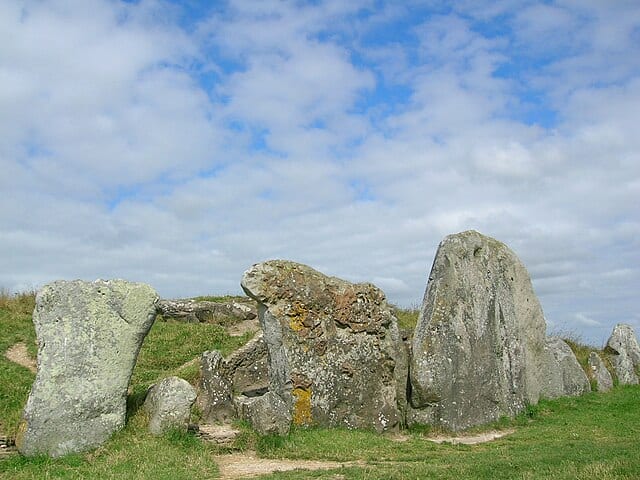Every year archaeologists uncover ancient structures that give us more insight into human cultural development. Many of the world’s most ancient buildings held religious importance. These range from tombs containing items intended to aid the deceased in the afterlife to temples honoring revered deities of various cultures and altars used for animal or human sacrifices. (Here are ancient civilizations that have sacrificed humans.)
After a ground fire swept through a vegetated area on the island of Guernsey in 1976, a granite slab was uncovered sticking out of a mound of soil. The subsequent excavation exposed an undisturbed burial site dating back 6,500 years, now known as Les Fouaillages. This discovery ranks as one of the oldest monuments ever found in Western Europe.
24/7 Tempo has assembled a list of the 30 oldest structures globally by referencing various archaeological, engineering, historical, and general interest sources, such as World Archaeology, Realm of History, and Smithsonian Magazine.
Some sites trace their origins back to the Paleolithic era, which spanned from approximately 2.5 million years ago to around 10,000 B.C. This period is characterized by hunter-gatherer societies who used chipped stone and bone tools. The majority of sites, however, originate from the subsequent Neolithic era. During this time, nomadic groups started to establish permanent or semi-permanent settlements and further refined their stone tools.
During this period, animal domestication and agriculture emerged independently in various societies. Among the world’s oldest structures are tombs, burial mounds, religious temples, protective walls, and even entire cities.
Here are the world’s most ancient structures:
Ngunnhu Fish Traps of Brewarrina
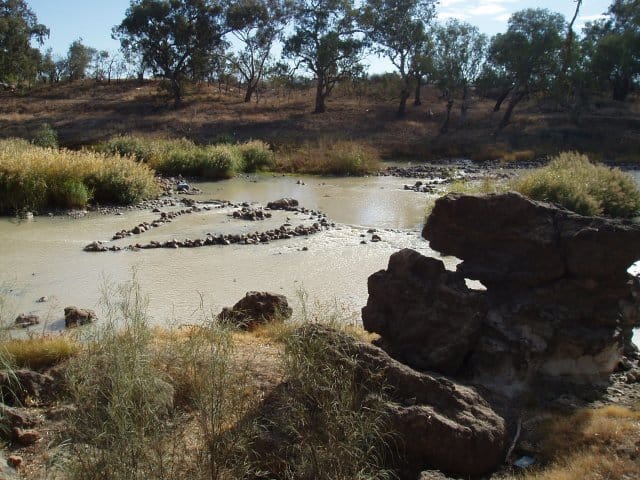
- Location: Brewarrina, New South Wales, Australia
- Year built: circa 38000 B.C.
- Purpose: Fish traps
Possibly the oldest human-made structures, these ancient stone walls constructed by Australian Aboriginal people along the Barwon River suffered significant damage when Europeans began to colonize the area. According to Aboriginal legend, the fish traps were created by the sky god Baiame.
Theopetra Cave Wall
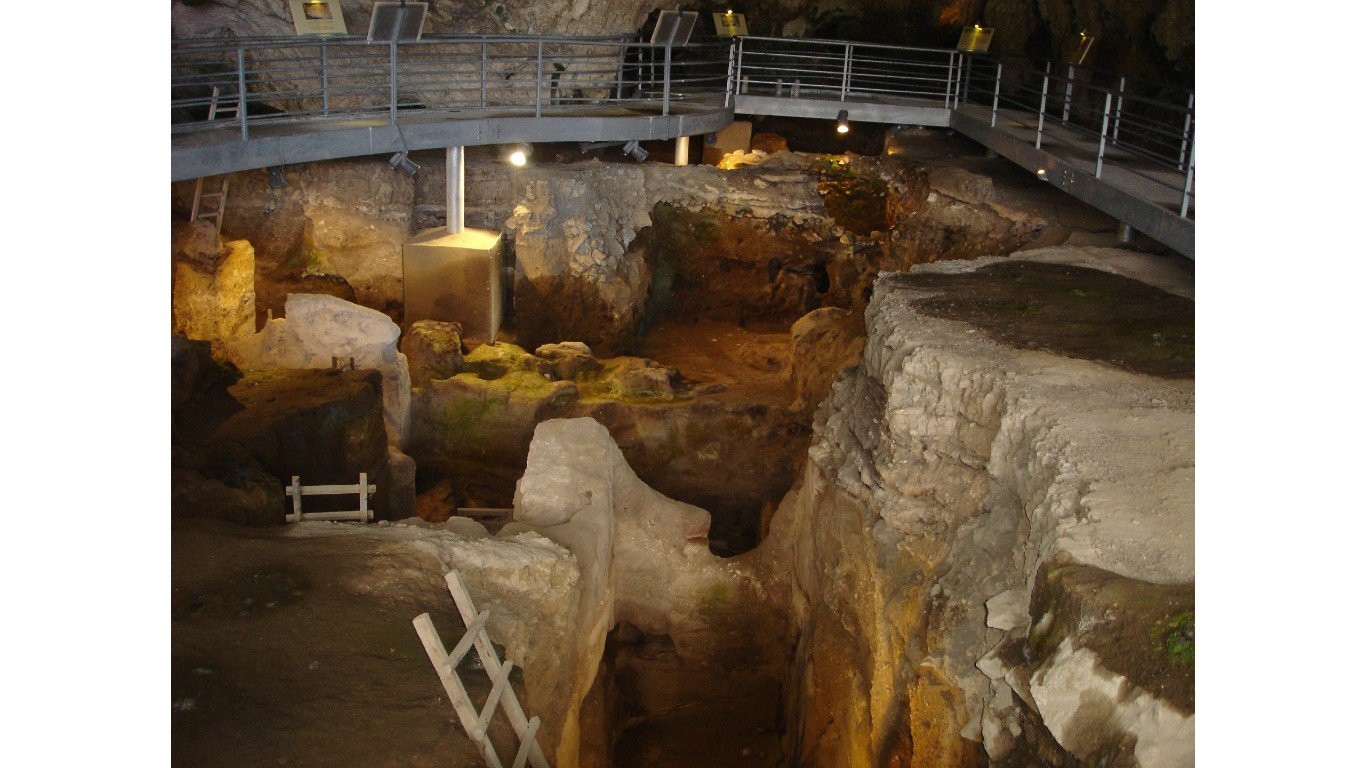
- Location: Theopetra Cave, Thessaly, Greece
- Year built: circa 21000 B.C.
- Purpose: Barrier against the wind
This wall guards the entrance to a cave used by Paleolithic people during the last ice age. Built of stone in a dry masonry style, the wall likely served to insulate the cave from the cold. The cave itself spans an area of 5,382 square feet, with evidence of Neanderthal dating back 135,000 years.
Tell Qaramel
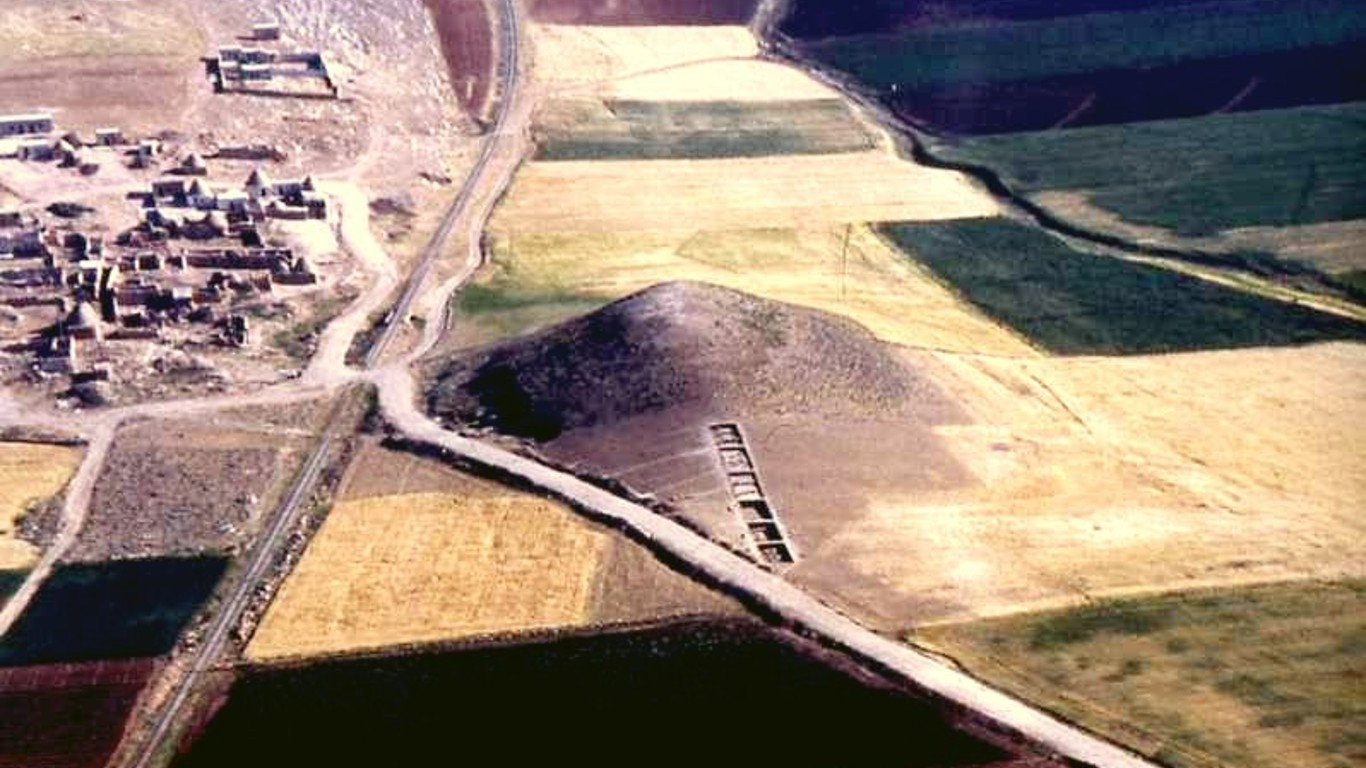
- Location: Aleppo Governorate, Syria
- Year built: circa 11000-9670 B.C.
- Purpose: Settlement
This Neolithic archaeological site contains the world’s earliest known permanent stone-built settlement in the world. It features remnants of five stone towers, with the oldest containing a raised hearth encircled by benches. Evidence from the site indicates that the initial settlement predates grain agriculture and animal domestication. Instead, the settlement may have originated from religious ceremonies.
Ruins at Göbekli Tepe
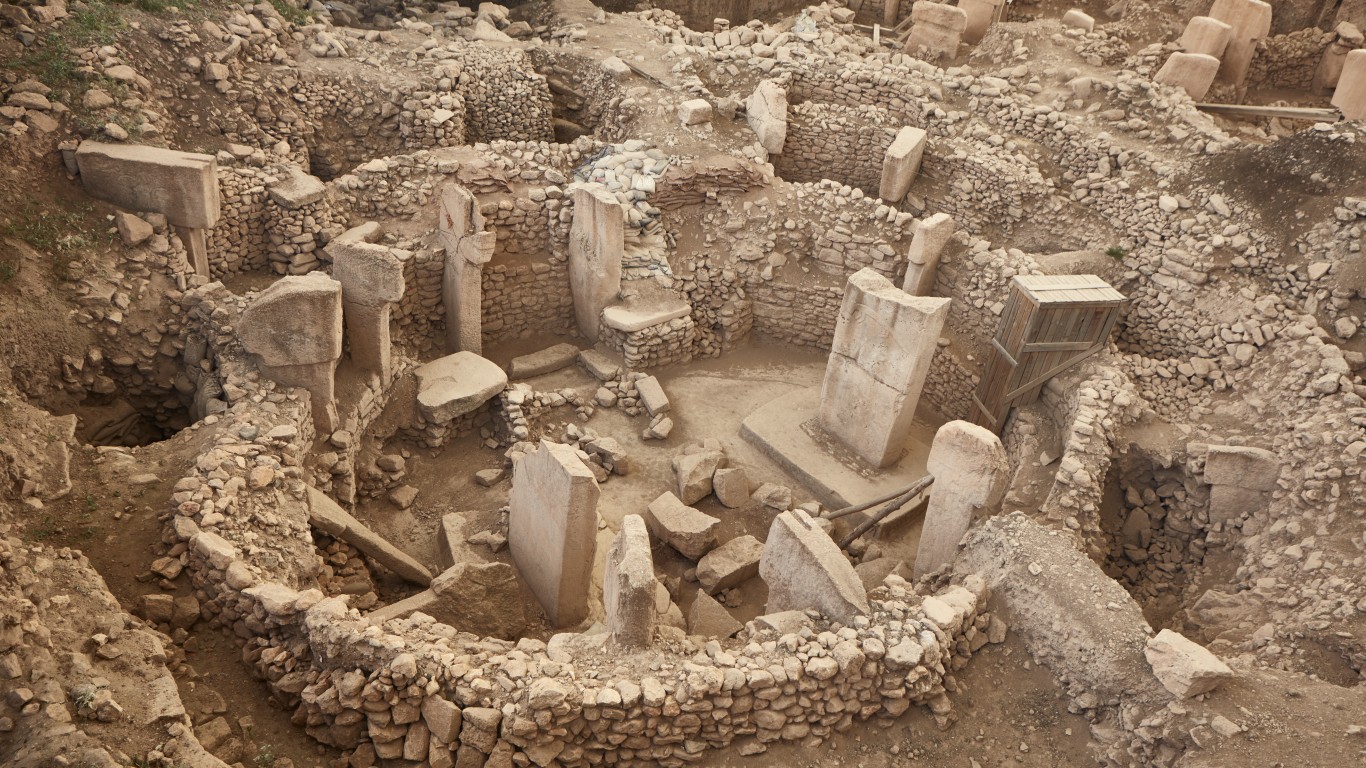
- Location: Southeastern Anatolia, Turkey
- Year built: circa 9500-8500 B.C.
- Purpose: Unknown
Before the development of metal tools, pottery, and agriculture, this ancient Neolithic site features massive stone megaliths arranged in circles, potentially making it the world’s oldest temple. The pillars, weighing up to 10 tons each, are intricately carved with human figures.
Wall of Jericho
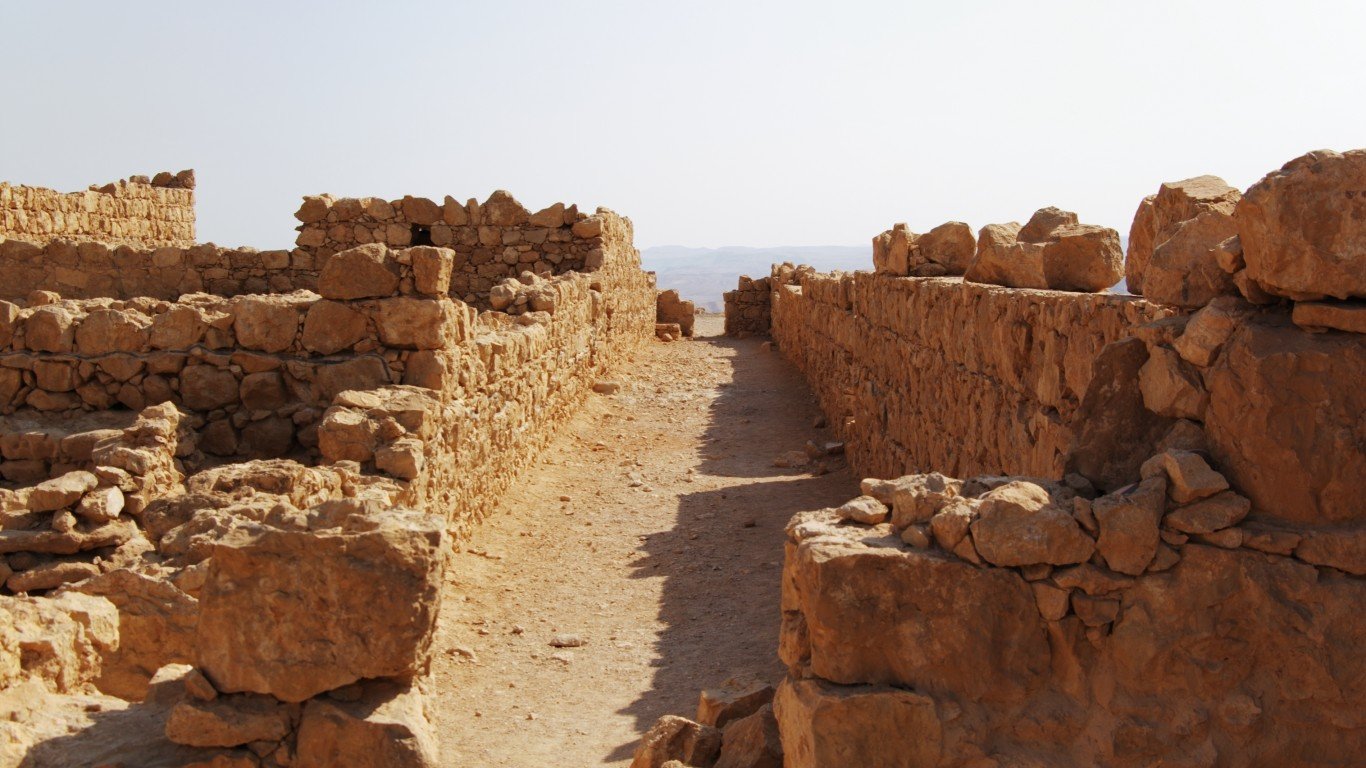
- Location: Tell es-Sultan/Tel Jericho, West Bank, Palestinian Territories/Israel
- Year built: circa 8000 B.C.
- Purpose: Defensive barrier or flood protection
Most likely built to shield the Neolithic settlement from flooding, the wall at Jericho originally stood at nearly 12 feet high and over 5 feet wide. Jericho is recognized as the world’s oldest walled city and is among the oldest continuously inhabited cities. Inside the wall, the original homes were circular structures made from clay and straw bricks.
Tower of Jericho

- Location: Tell es-Sultan/Tel Jericho, West Bank, Palestinian Territories/Israel
- Year built: circa 8000 B.C.
- Purpose: Unknown
Inside the walls of Jericho stands a massive stone tower with 22 steps leading up its interior. The conical tower is 28 feet high and likely served a communal or ceremonial function in the early settlement. It is believed that constructing the stone structure took approximately 11,000 days.
Çatalhöyük
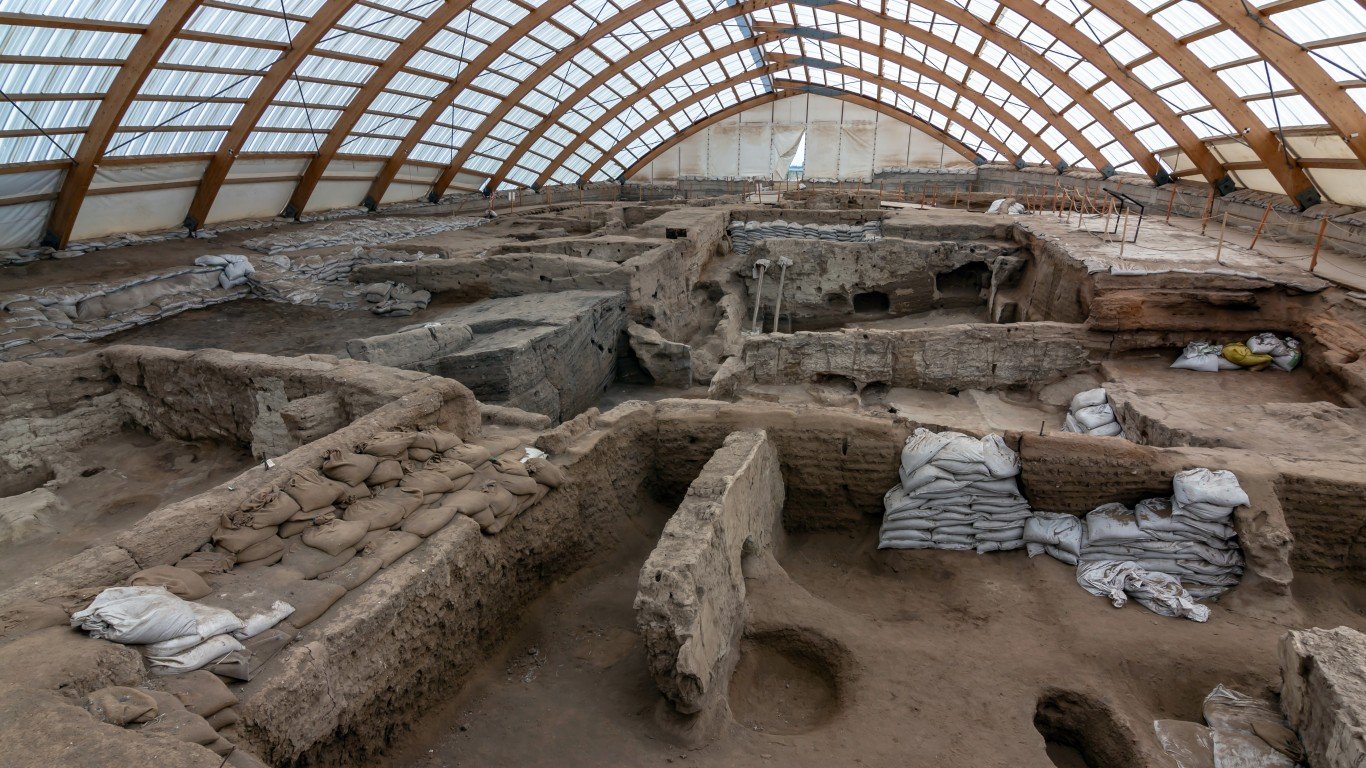
- Location: Konya province, Turkey
- Year built: circa 7500 B.C.
- Purpose: Settlement
This extensive Neolithic settlement was inhabited between 7500 and 6400 B.C., likely reaching its peak around 7000 B.C. with an estimated 10,000 residents. The mud brick homes and other structures are closely grouped without any alleys or pathways between them. Instead, access to the interior was likely gained through roof openings, with rooftops possibly serving as streets and platforms for daily activities.
Khirokitia
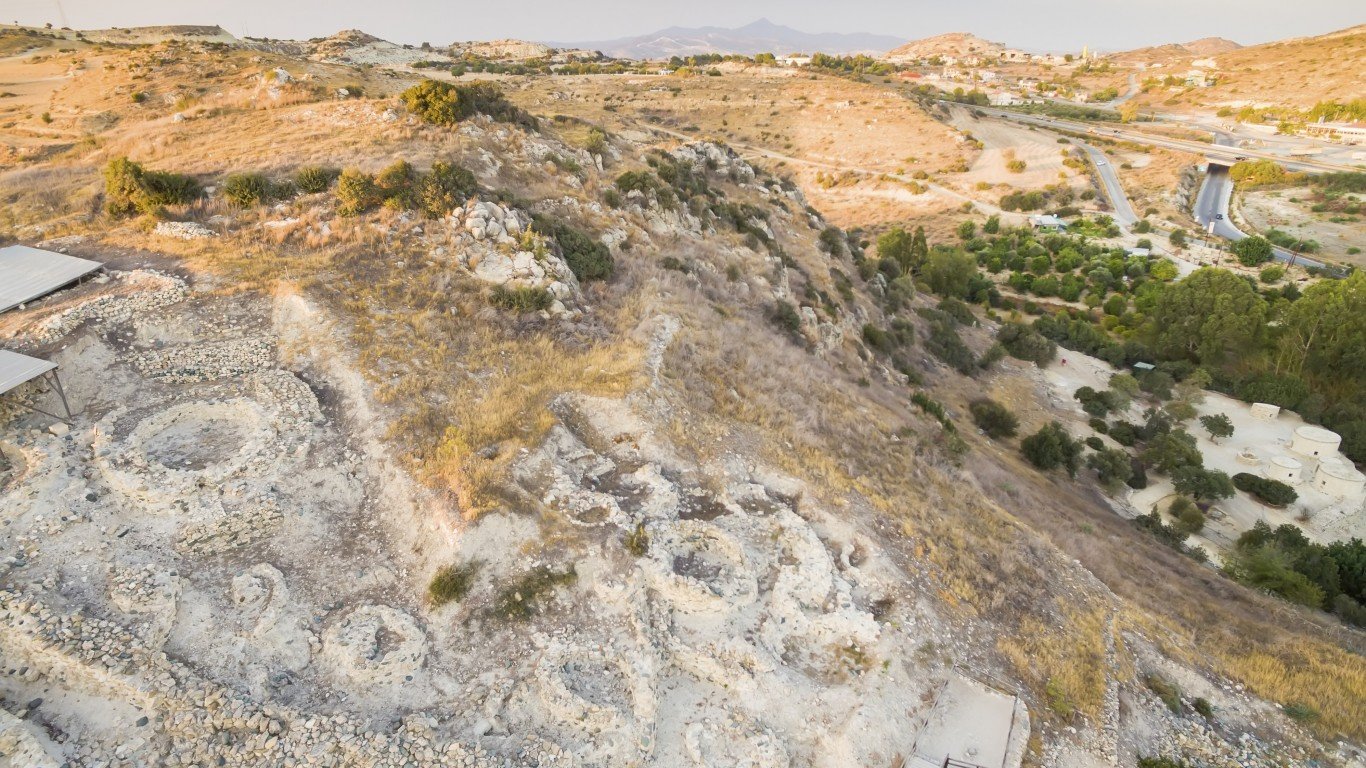
- Location: Larnaca, Cyprus
- Year built: circa 7000 B.C.
- Purpose: Settlement
Khirokitia is among the most well-preserved pre-pottery Neolithic settlements in the Mediterranean, likely inhabited from the seventh to fourth millennium B.C. The village was surrounded by a substantial stone wall, and the foundations of the round dwellings within the enclosure were also constructed of stone. Multiple huts clustered around a central courtyard are believed to have formed a single household, with each hut serving different purposes.
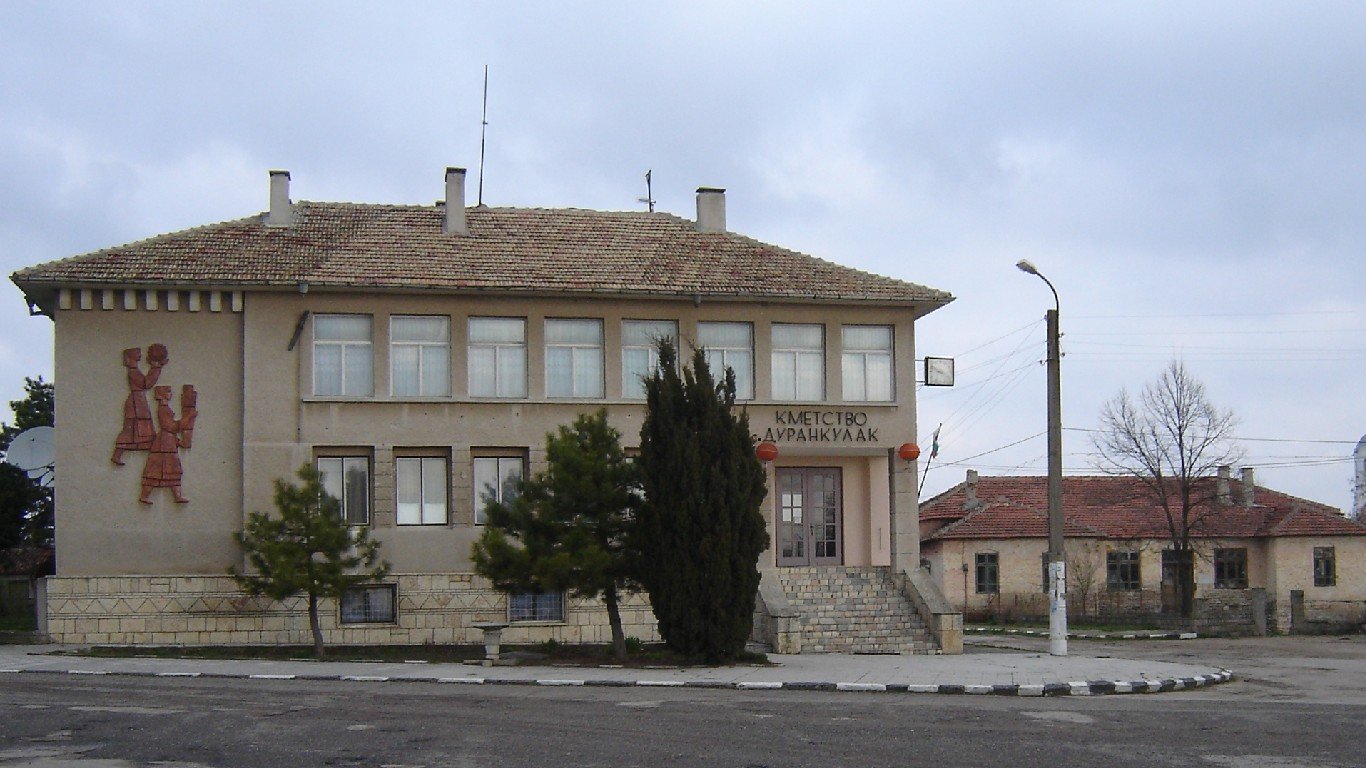
Durankulak
>Location: Dobrich Province, Bulgaria
>Year built: circa 5500 B.C.
> Purpose: Settlement
Located on an island in Durankulak lake, this huge Neolithic settlement includes numerous stone structures, one of which is among the largest prehistoric stone buildings in Europe, spanning over 2,000 square feet. The homes were spacious, with several rooms in each structure. The builders were not only skilled in stone work, but also among the first cultures to smelt copper and gold to create jewelry.
Perperikon
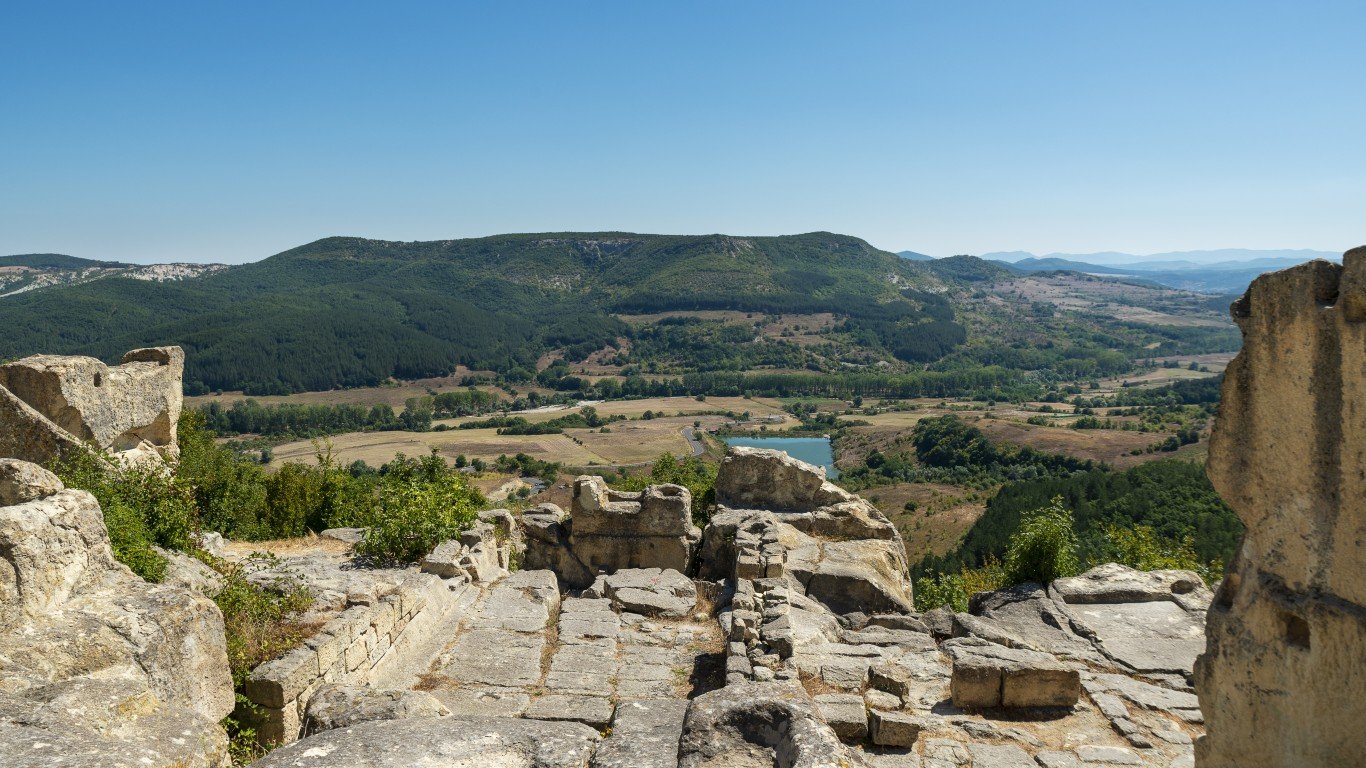
- Location: Kardzhali Province, Bulgaria
- Year built: circa 5000 B.C.
- Purpose: Settlement
Perperikon has seen various transformations, transitioning from from Thracian to Roman and then Byzantine control. However, the earliest human remains at the site date back to the fifth millennium B.C. Among the oldest structures is a nearly 6-foot in diameter round altar carved from rock. The sanctuary, carved into the mountain during the late Bronze Age, is believed to have been used as a temple dedicated to Dionysus.
Cairn of Barnenez
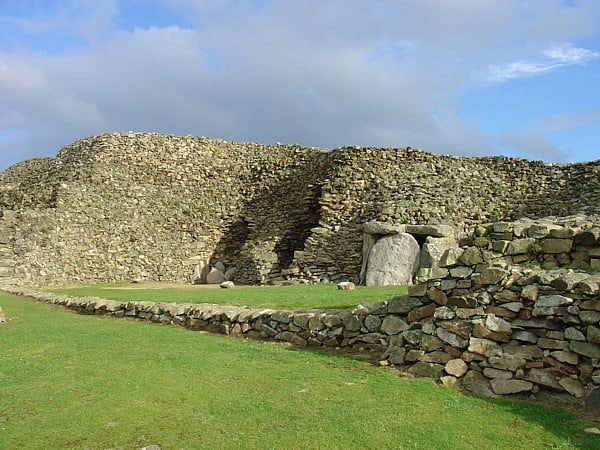
- Location: Finistere, Brittany, France
- Year built: circa 4800 B.C.
- Purpose: Monument
The Cairn of Barnenez is a massive megalithic monument, stretching 246 feet in length, 82 feet in width, and standing over 27 feet tall. Made of more than 13,000 stones, the ancient structure has 11 burial chambers and is decorated with intricate carvings of snakes, bows, axes, and other symbols common in megalithic art seen in Brittany.
Locmariaquer megaliths
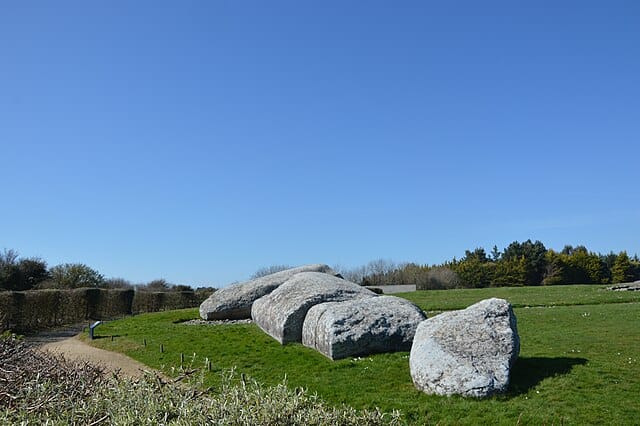
- Location: Locmariaquer, Brittany, France
- Year built: circa 4700-3300 B.C.
- Purpose: Monuments
This Neolithic site holds multiple structures, notably the fragmented remnants of a 67-foot-tall, 330-ton carved stone monument, believed to have fallen during an earthquake and now lies in four distinct sections. This gigantic stone is regarded as the largest single stone ever moved and erected by Neolithic communities. Additionally, the site includes a large monolithic tomb, or dolmen, featuring carvings of an ax and plow, as well as a 460-foot-long passage tomb.
Les Fouaillages

- Location: Guernsey, Channel Islands, English Channel
- Year built: circa 4500 B.C.
- Purpose: Burial ground
Discovered in 1976, this ancient burial mound houses a stone structure believed to be the remains of a tomb, accompanied by pottery fragments indicating offerings made during funerary rituals. Adjacent to the tomb is another structure that likely served as a shrine.
Sechin Bajo
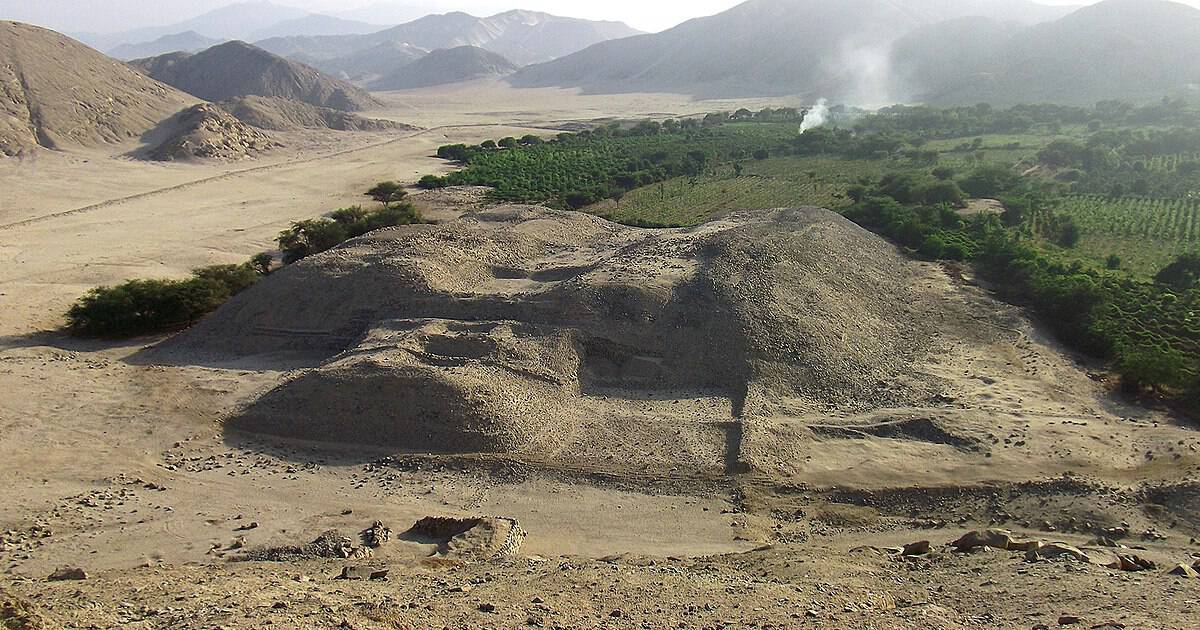
- Location: Ancash, Peru
- Year built: circa 3600 B.C.
- Purpose: Settlement
Located on the dry Peruvian coast, the Sechin Bajo site may be a relic of the earliest civilization in the Americas. Spanning 91 acres, the site features ancient structures, a ceremonial center, sunken circular plazas, and an adobe clay frieze showing a figure what appear to be ceremonial items alongside a human head.
Tumulus of Bougon
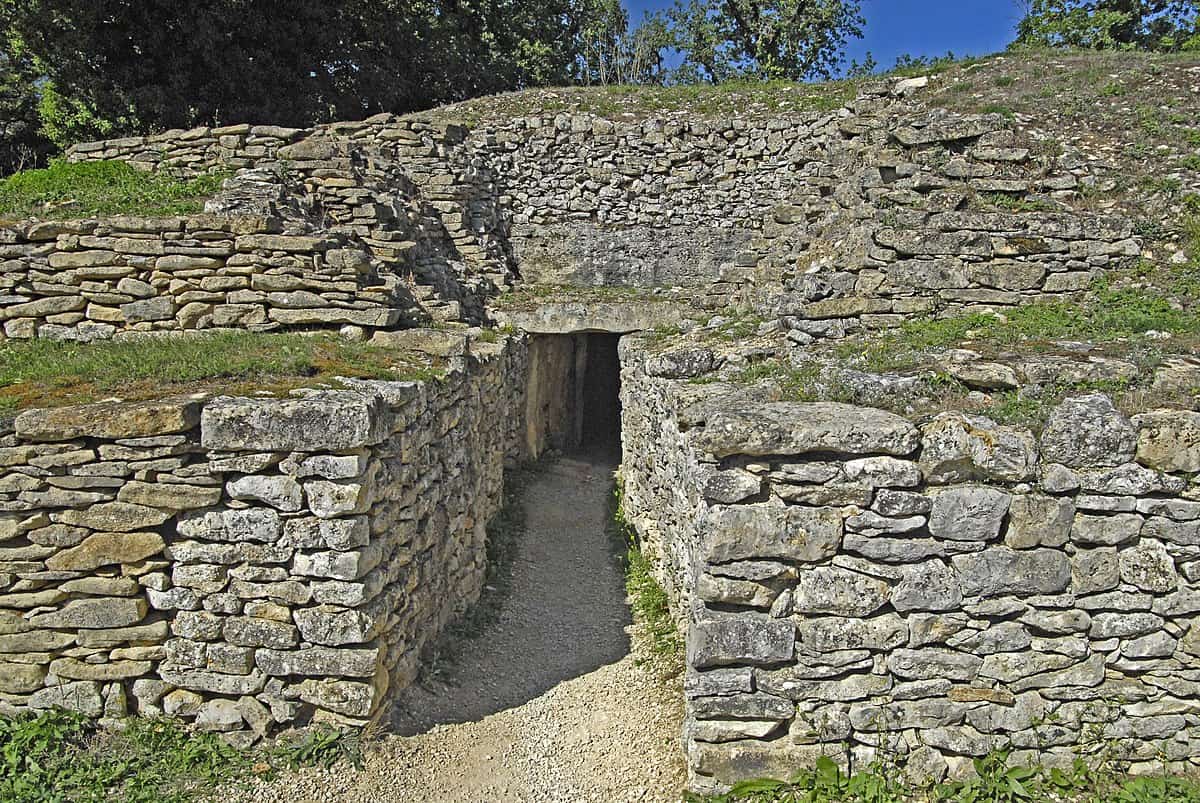
- Location: Bougon, Deux-Sevres, France
- Year built: circa 4800 B.C.
- Purpose: Burial ground
This Neolithic burial site consists of five barrows or burial mounds constructed from layered dry stone and earth. Each mound features passageways, some with internal structure like pillars and capstones over the burial chambers, along with slab floors. Inside the chambers, archaeologists have discovered human remains, including skulls and skeletons.
Saint-Michel Tumulus

- Location: Carnac, Brittany, France
- Year built: circe 4500 B.C.
- Purpose: Burial ground
Among the many burial mounds in Brittany, Saint-Michel Tumulus stands out as the largest in continental Europe, measuring 410 feet in length, 160 feet in width, and 33 feet in height. In 1862, a central vault was discovered containing pearls, axes, and other funerary offerings. Further excavations uncovered a second vault containing more than a dozen small stone chests.
Hypogeum of Hal Saflieni
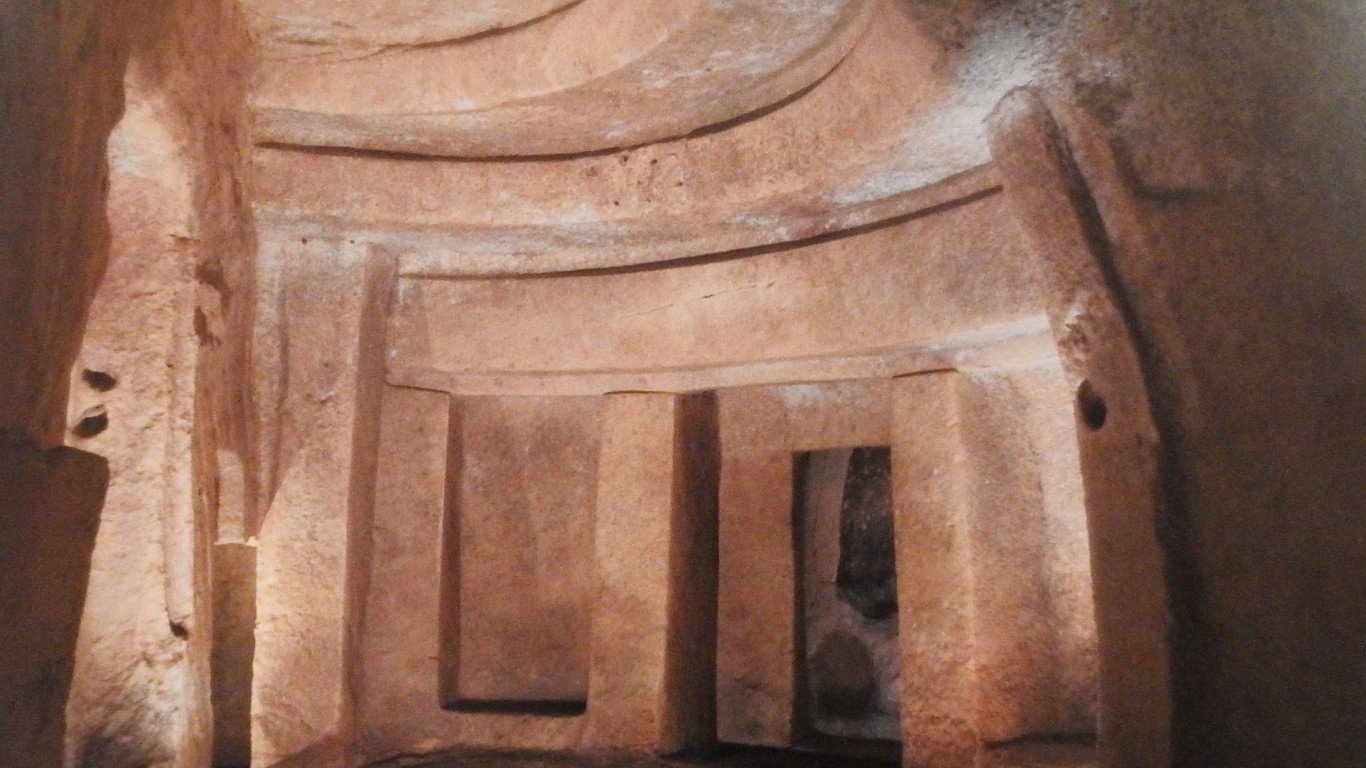
- Location: Paola, Malta
- Year built: circa 4000 B.C.
- Purpose: Shrine, sanctuary, mass tomb
This underground temple complex contains a necropolis, where almost 7,000 distinct human remains have been discovered, some of which have elongated skulls. Carved from an existing cave, the complex includes red ochre paintings and strategically placed openings that provide natural light to the chambers.
Anu Ziggurat
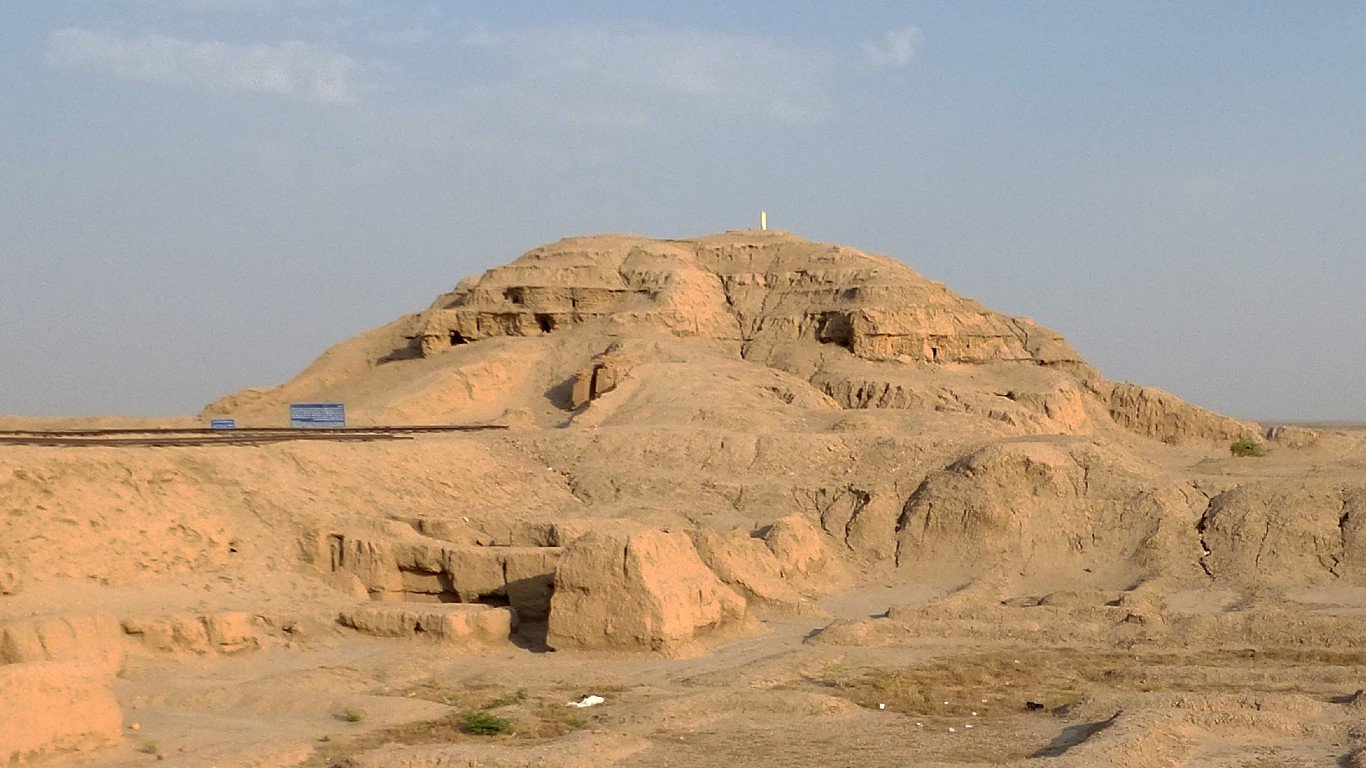
- Location: Uruk, Al-Warka, Muthanna Governorate, Iraq
- Year built: circa 4000-3800 B.C.
- Purpose: Terraced tower and temple
Constructed around 4000 B.C., this ziggurat in Uruk, dedicated to the Sumerian sky gad Anu, has a grand limestone staircase leading to the revered White Temple on top. The temple, that was covered with gypsumc served as a sacred site for religious ceremonies. Over time, the ziggurat saw 14 phases of additional expansion.
Monte d’Accoddi

- Location: Sassari, Sardinia, Italy
- Year built: circa 4000-3650 B.C.
- Purpose: Temple or altar
Believed to be an altar or temple, this elevated stone platform on Sardinia was originally built around 4000 B.C. It was later destroyed and rebuilt with limestone into a step pyramid reminiscent of a ziggurat by 3000 B.C. Excavations of the site have uncovered remains of sacrificed cow, pig, and sheep, marking it as one of the earliest known religious monuments in the Western Mediterranean.
Knap of Howar

- Location: Papa Westray, Orkney, Scotland
- Year built: circa 3700 B.C.
- Purpose: Farmhouse
Overlooking the sea, the Knap of Howar is possibly the oldest intact stone dwelling in northern Europe. The Neolithic farming site features two connected houses with stone shelves, beds, and fireplaces inside, along with traces of domesticated animals, barley farming, and fishing activity.

- Location: Wiltshire, England
- Year built: circa 3650 B.C.
- Purpose: Tomb
This Neolithic burial mound, built by an ancient nomadic herding culture measures over 300 feet in length and 65 feet in width. It contains a detailed 40-foot inner burial chamber and holds a mix of human and animal bones from various centuries.
Megalithic Temples of Malta
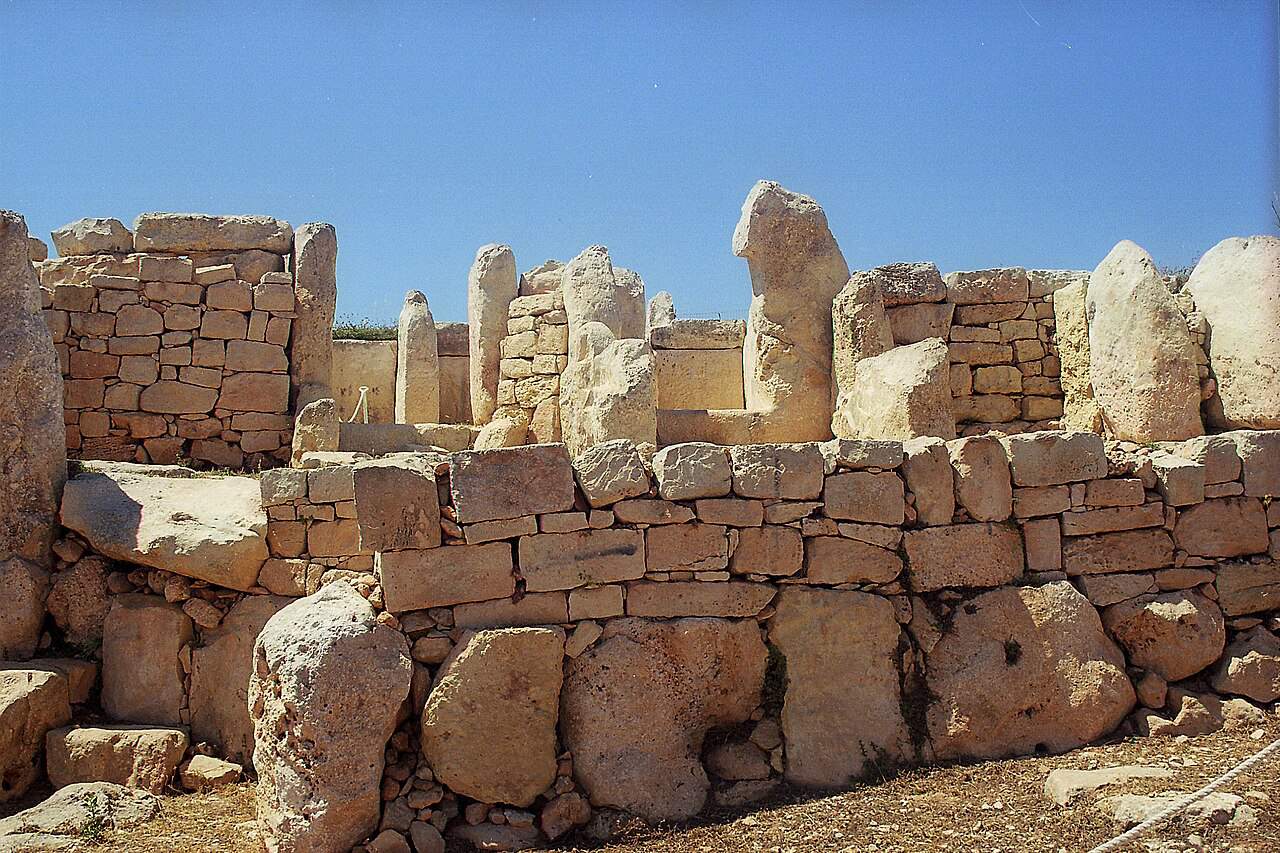
- Location: Various locations, Malta
- Year built: circa 3600-2500 B.C.
- Purpose: Temples
Built between 3600 B.C. and 2500 B.C., the megalithic temples on Malta showcase the cultural and architectural advancements of their Neolithic creators. These are some of the earliest free-standing stone structures globally, featuring distinctive ovular forecourts, stone post entrances, and D-shaped chambers.
Listoghil
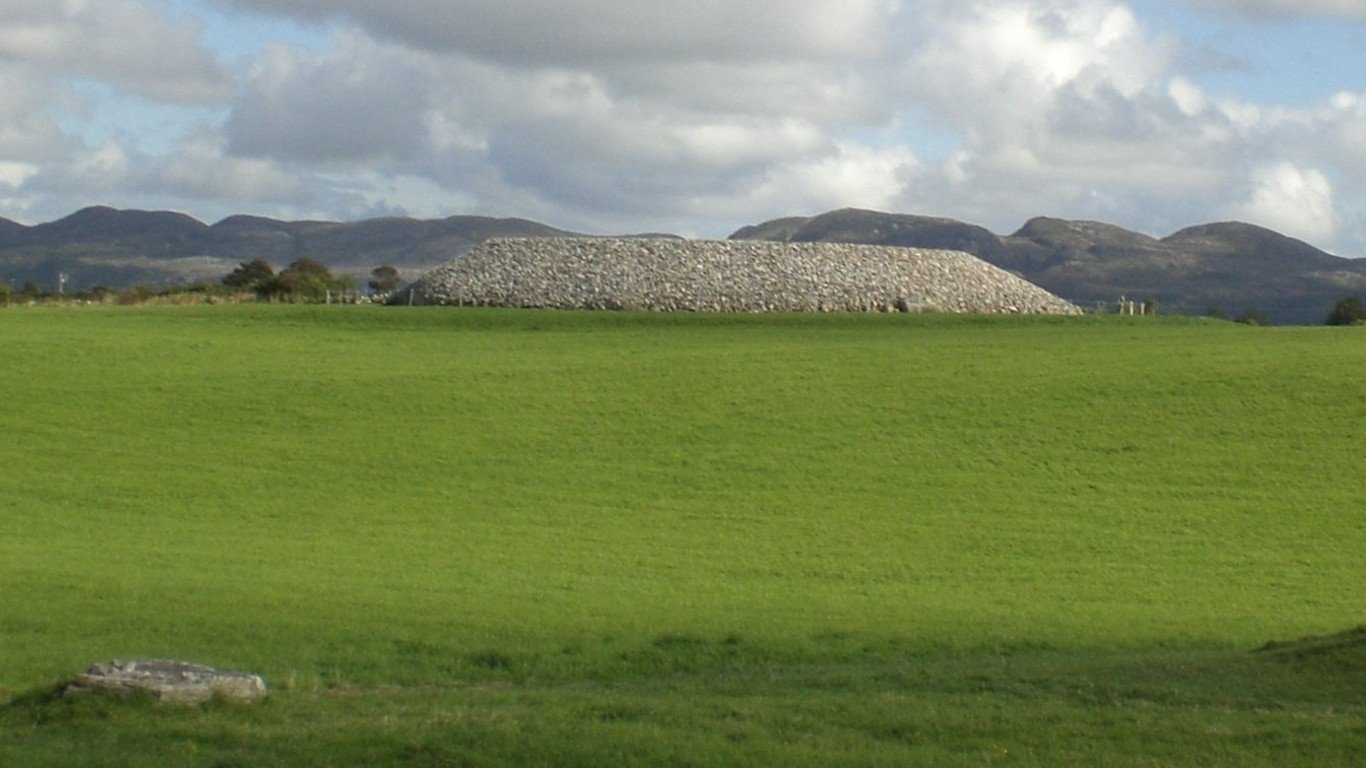
- Location: County Sligo, Ireland
- Year built: circa 3550 B.C.
- Purpose: Tomb complex (passage tomb)
Located in Carrowmore, a collection of 30 tombs and megalithic monuments in northern Ireland, Listoghil stands out as the central tomb. This impressive structure measures 111 feet in diameter and is made with dry-stacked stones. The central chamber has a carved limestone slab and contains both cremated and un-cremated human remains.
Watson Brake
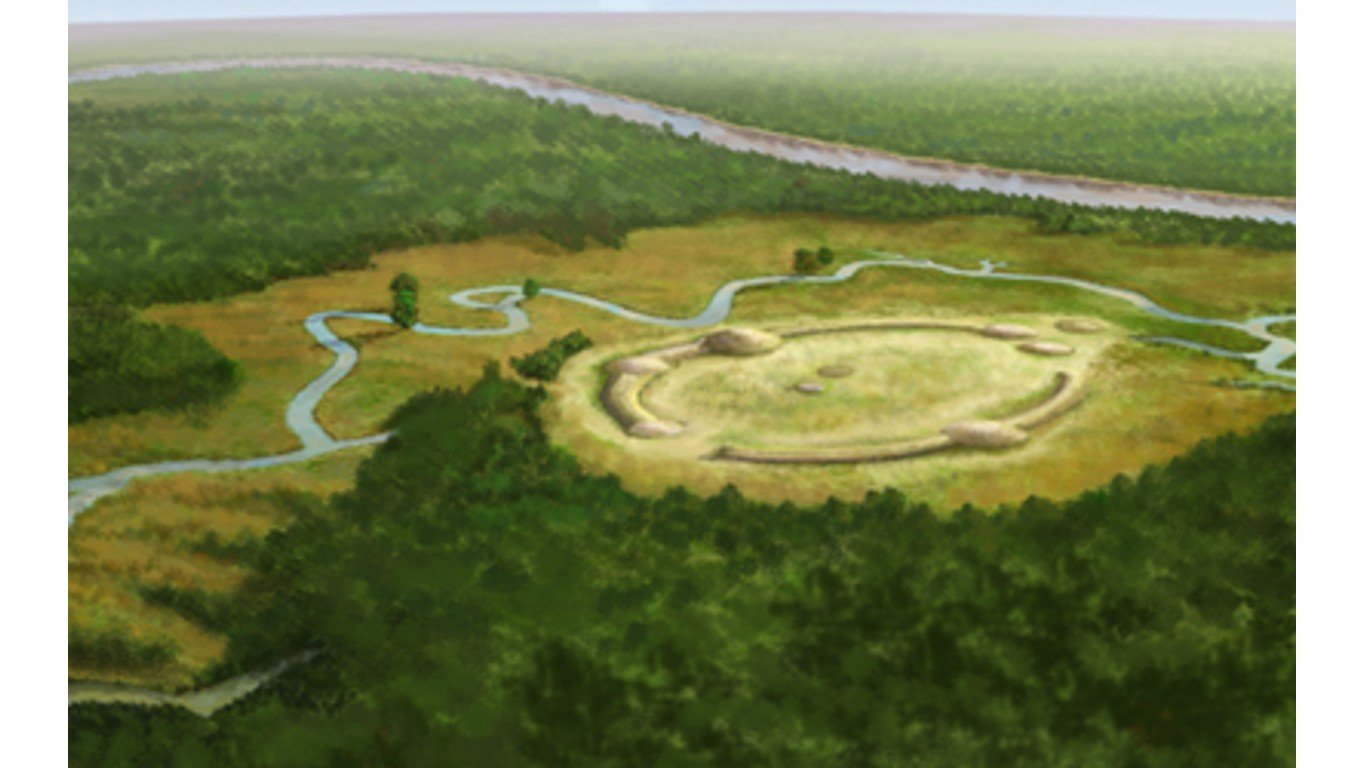
- Location: Ouachita Parish, Louisiana, U.S.A.
- Year built: circa 3500 B.C.
- Purpose: Seasonal settlement (?)
The most ancient earthen mound complex in North America, these Middle Archaic formations were constructed and used for many centuries by a nomadic hunter-gatherer society. The site contains 11 mounds, varying in height from 3 to 25 feet, interconnected by ridges to create a 900-foot oval shape. Discoveries within the layers indicate that the site served as a seasonal base for the nomadic community during the summer and fall months.
Hulbjerg Jættestue
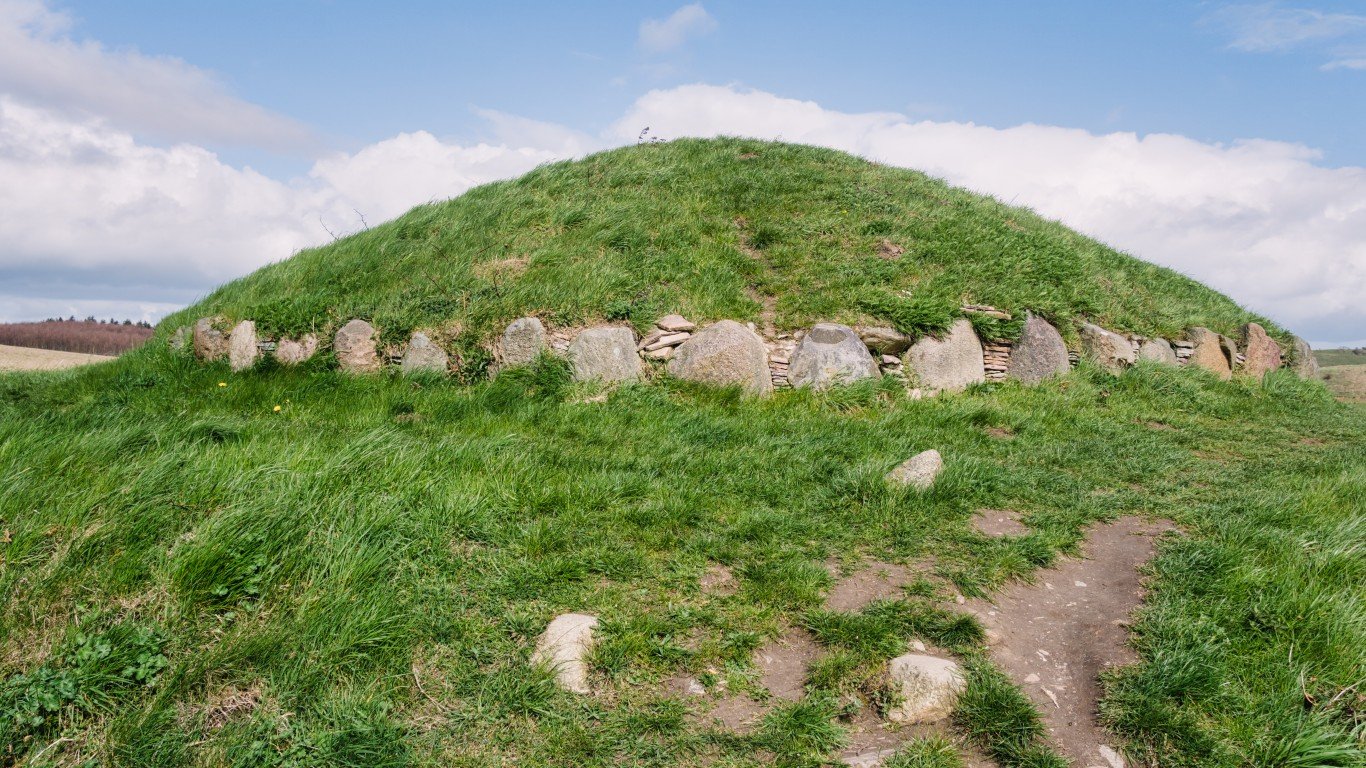
- Location: Langeland, Denmark
- Year built: circa 3300-3200 B.C.
- Purpose: Tomb complex (passage tomb)
This passage tomb on the Danish island of Langeland was built by the Funnelbeaker culture and features a circular stone mound housing a large central chamber. The chamber has a roof made of rock slabs and intricately tiled stone walls and floors. Excavations have revealed the remains of 36 adults and 17 children, along with artifacts like amber beads, flint daggers, pottery, and arrowheads.
Shahr-e Sukhteh
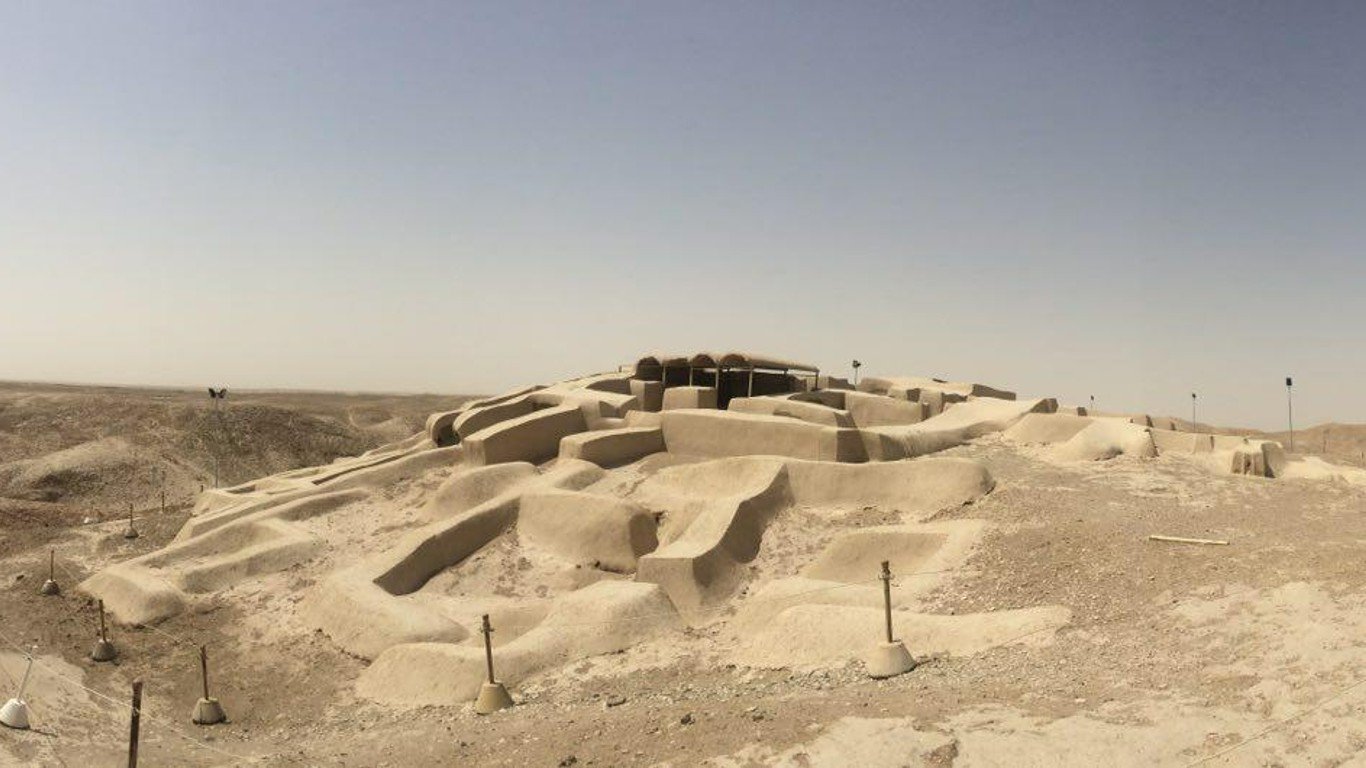
- Location: Sistan and Baluchestan Province, Iran
- Year built: circa 3200 B.C.
- Purpose: Settlement
Shahr-e Sukhteh, meaning “Burnt City,” was a Bronze Age urban center along a trade route, notable for its unique cultural traits compared to neighboring civilizations. The city was destroyed by fire three times before its eventual abandonment. Covering over 370 acres, the site features five distinct sectors, including a vast graveyard estimated to contain between 25,000 and 40,000 graves.
Newgrange
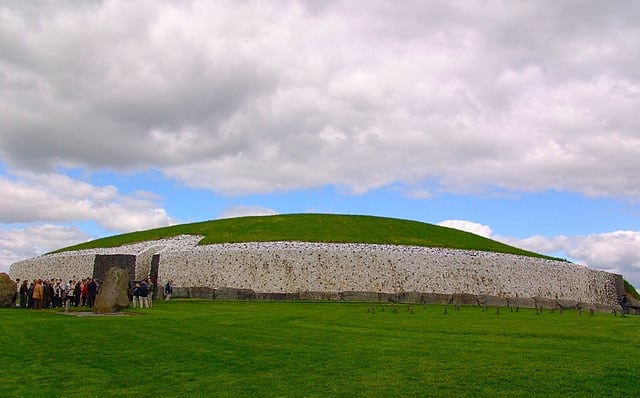
- Location: County Meath, Ireland
- Year built: circa 3200 B.C.
- Purpose: Tomb complex (passage tomb)
This massive passage tomb stands at 39 feet tall and spans nearly 280 feet in width, and contains over 220,000 tons of stone and building materials, including white quartz and engraved stones. Within its central chambers, archaeologists have uncovered human remains and items associated with funeral rituals. The tomb’s entryway is strategically aligned with the rising sun during the winter solstice, allowing sunlight into the interior.
Pyramid of Djoser
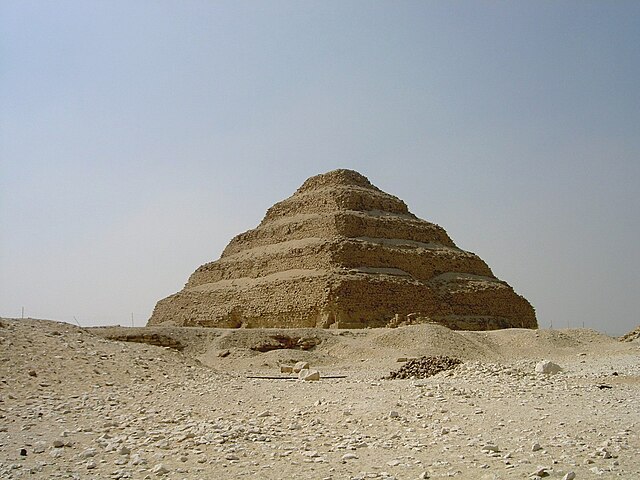
- Location: Saqqara, Egypt
- Year built: 2667-2648 B.C.
- Purpose: Tomb
Created by High Priest Imhotep as the final resting place for Pharaoh Djoser, this pyramid is the earliest example of Egypt’s iconic pyramids. The monument, featuring six tiers and four sides, originally stood at 205 feet tall and was covered in white limestone. While most of its interior treasures, including the Pharaoh’s remains, have been looted, the pyramid still contains several burial chambers and storage rooms where archaeologists have unearthed over 40,000 stone vessels.
The Great Pyramid of Giza

- Location: Giza (Greater Cairo), Egypt
- Year built: circa 2600 B.C.
- Purpose: Tomb
Constructed as a tomb for Pharaoh Khufu, this huge pyramid once stood at 481 feet, reigning as the world’s tallest structure for at least 3,800 years. Its exterior was covered with polished white limestone that reflected the sun’s rays and was visible from afar. While the pyramid contains three known chambers, most of its treasures have been removed by ancient grave robbers.
Mohenjo-daro
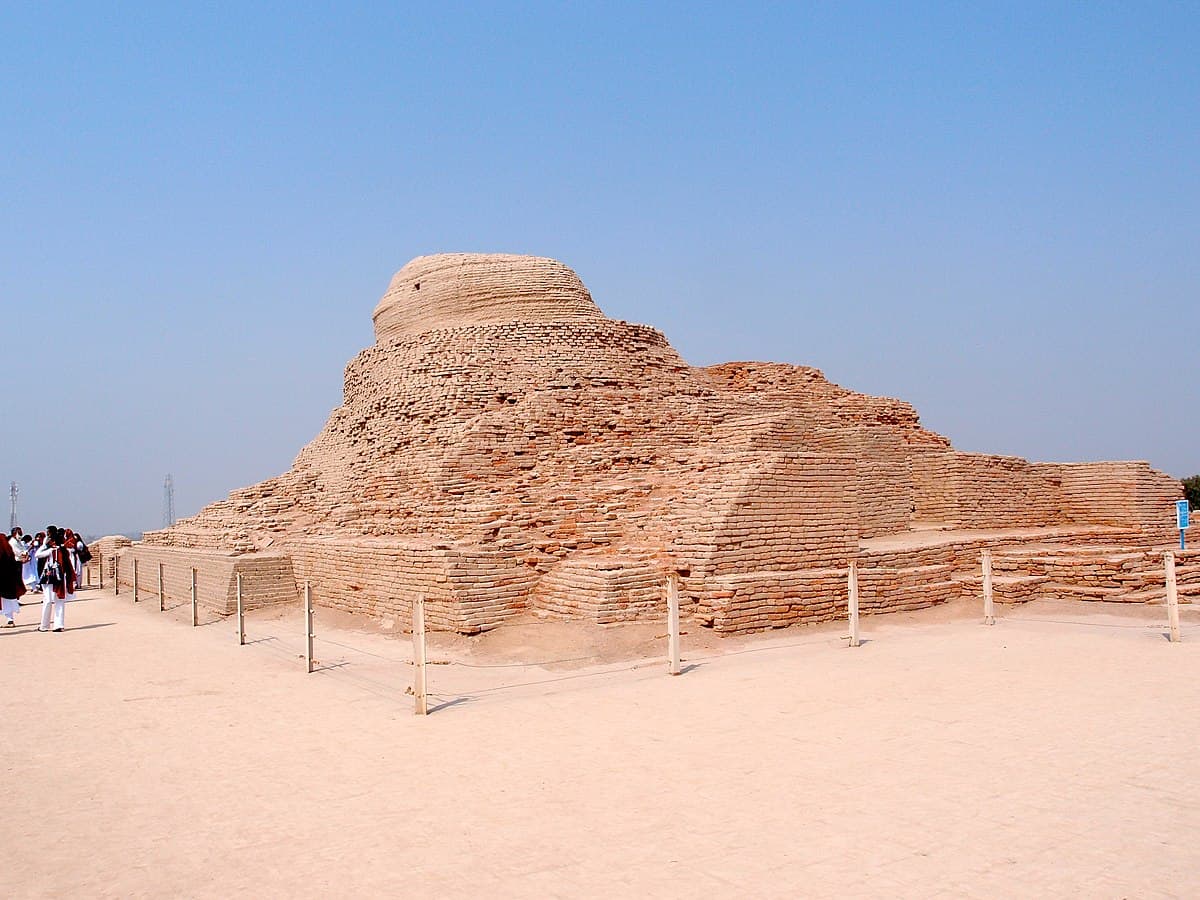
OLYMPUS DIGITAL CAMERA
- Location: Larkana District, Sindh, Pakistan
- Year built: circa 2500 B.C.
- Purpose: Settlement
Meaning “Mound of the Dead Men,” Mohenjo-daro was a prominent city of the ancient Indus Valley or Harappan Civilization, showcasing sophisticated urban planning and civil engineering. The city was meticulouosly designed on a grid pattern, with buildings predominantly made of fired bricks. It contained public baths, a busy marketplace, a central well, and two large assembly halls. Homes included inner courtyards, and some even had multiple levels and private bathing facilities.

